
Scott Kirkland talks The Crystal Method's self-titled new album track-by-track
Electronic music pioneers The Crystal Method originally planned to release their self-titled new album last summer, but recording was put on hold for several months when Scott Kirkland underwent an operation to remove a benign posterior fossa arachnoid cyst in his brain. Complicating matters further, Kirkland developed a bacterial infection, which put him in the ICU for a week and required a month of at-home recuperation.
“It was a scary time," Kirkland says. "We all tend to put important dates on the calendar – birthdays, anniversaries and so on – but anytime somebody opens up your skull and fiddles with your brain, you should mark that date down too as being important."
Once he was well enough to return to the studio, Kirkland and his music-making partner, Ken Jordan, attacked tracks both new and old with a fresh perspective. "I wouldn't recommend what I went through to anybody," Kirkland says, chuckling, "but sure, the time away kind of cleared out the cobwebs. Ken, too - we both went back in and said, 'OK, time to kick some ass.' And that's what we did."
Sonically, Kirkland and Jordan aimed to keep things gritty and aggressive, but rather than relying on the latest hardware and plugins, they found inspiration in vintage synthesizers and analog pedal effects. "Everybody has the same stuff these days, but not everybody has some of the old stuff," Kirkland says. "And the old stuff makes you think differently. You have to work it; you push a button or move something and you get a crazy, wild, unexpected sound. That’s where the excitement for making music comes from. We didn’t want to lose that feeling."
The new album features appearances by country-pop singer LeAnn Rimes, Voice runner-up Dia Frampton and former Scars On Broadway frontman Franky Perez, among others, but Kirkland stresses that he and Jordan weren't looking to do the standard-issue "special-guest" package. "Whenever somebody came in and did something with us, it was because that's what the music needed," he explains. And while some artists are currently calling into question the practically of releasing full albums, Kirkland asserts that he and Jordan remain hardcore traditionalists: “No matter how much they try to take it away from us, we’re sticking with albums. We’ll be those guys who still believe in the long format when everybody else has gone the other way. We have a romantic attachment to albums – they're still cool."
On the following pages, Scott Kirkland runs down The Crystal Method's self-titled new album track-by-track.
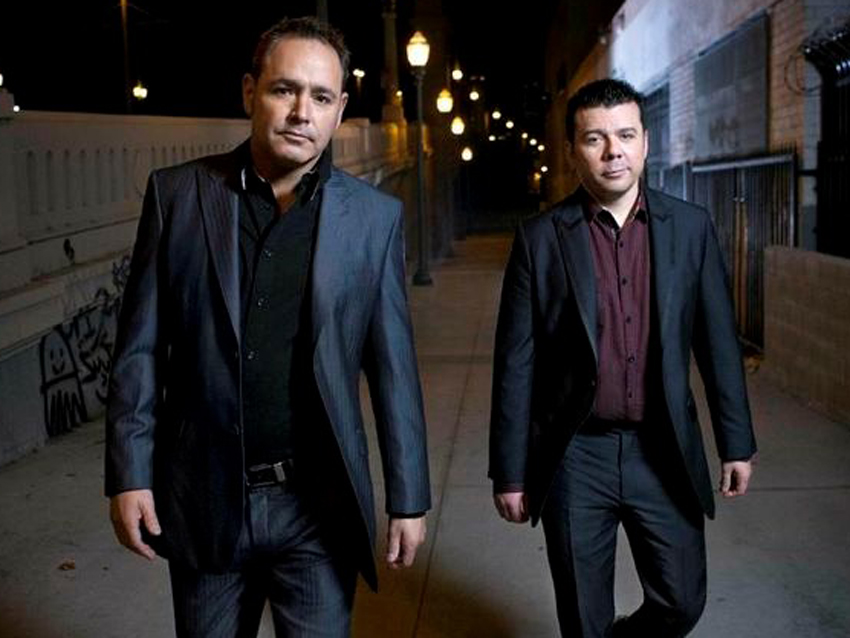
Emulator
“This track was started at home on Ableton. It’s a great groove, created around a kick, snare and a bassline – I’ve always love grooves that are that simple. A lot of soft synths went into it. It’s one of those tracks that really maintains a deep commitment to the beat and the bass.
“We used the Arturia Oberheim SEM plugin in the pretty parts, and the vocal samples are from our vast library that I used in Geist FXpansion. I basically took a drumbeat and used the transient hit and put a vocal over that. It’s pretty cool.”

Over It (featuring Dia Frampton)
“Dia Frampton is a friend of a friend. She came by and we had a great conversation, so we said, ‘Hey, let’s try doing something together.’ She brought a real skeleton version of the track, just her on acoustic guitar at a little faster tempo, kind of folky. As soon as she got through three lines, we were like, ‘Fuck, that’s amazing!’ Her voice sounds so nice.
“We attacked the song with great fervor and energy. We thought it was so great to hear Dia’s emotion – she’s expressing the internal struggle of the person she’s talking to. She’s so sweet in peson, but man, she's got a lot of big, beautiful power in that voice.
“We borrowed an old-school ARP Sequencer 1601 from a friend of ours to go along with our ARP 2600. We had it all hooked up, and I came into the studio one day and turned everything on. There was some combination of what I worked on the night before, and maybe I hit the wrong button or something – it made this crazy sound that I just loved. It was this bizarre spinning loop sound. I hooked everything up and recorded it. There’s a lot of cool, angry, ornery sounds with a lot of personality on this track.”
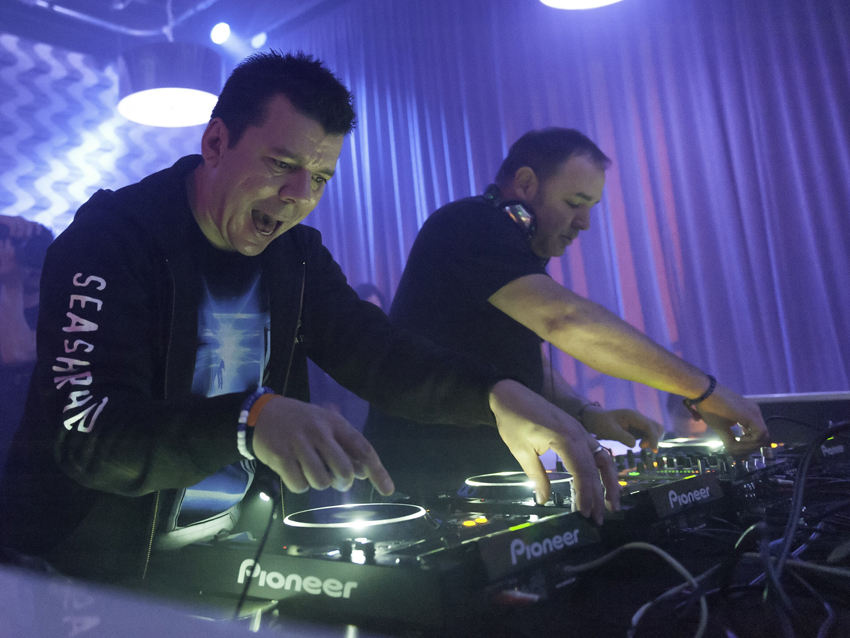
Sling The Decks
“A lot of the track is built around the piece that’s our tribute to one of our heroes, Peter Hook from New Order. We have a doubleneck bass guitar with a CDJ mounted in the middle of it – we play festivals with it. From our point of view, it was born out of the frustration of a nailed-down DJ. I play that bass on the track.
“It was one of the first songs we started working on, and it was one that we set aside as being mostly done. I was never quite happy with it, so I came back to it – it just needed some other stuff. Some of the chaotic business in the middle is my attempt to capture the fear and focus I’m feeling when I’m DJing and playing the bass at the same time.”
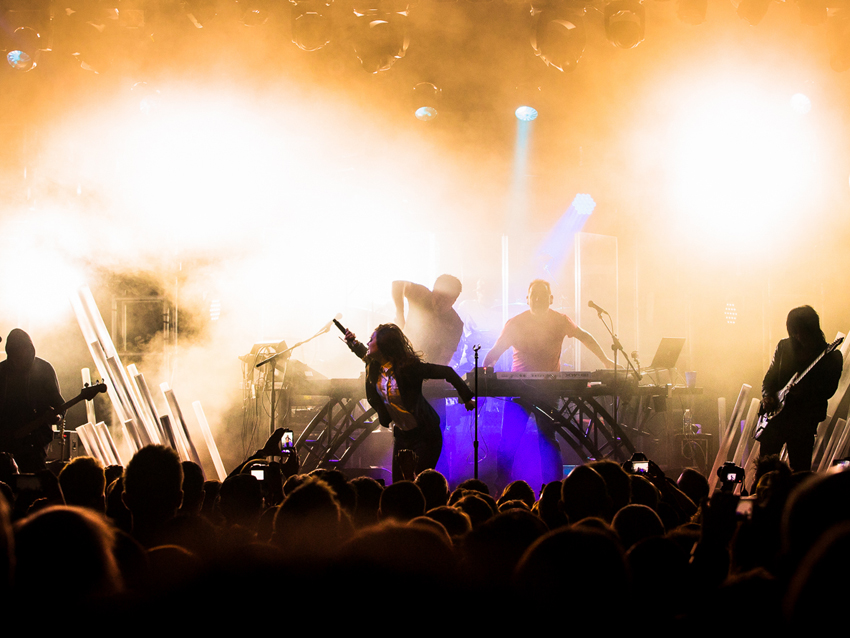
Storm The Castle (featuring Le Castle Vania)
"We did this one with Le Castle Vania, who’s been hunkered down in our Studio B for a few years. It’s funny: He said he needed a place to finish his record and that he would only be here for a few months, but he seems to have found a very comfortable spot.
“We love having him in the studio – he’s a really great guy. We got talking about doing something together, and because he’s got a heavy rock vibe, I came up with this track. I sent it over his way, and he came back with the big hi-hat and the attention to detail on the downbeat.
“I found a Fugazi sample that really intrigued me. The rhythm of it is changed up a bit, but the essence is there. [Sings] ‘Past all the shit that I said, I’m saying!’ [Laughs] So that’s what the track is based around, that huge rock feel. We did it live recently at the El Rey, and it was so much fun. We were originally going to have Franky Perez sing that part live, but it seemed like it was too little for him to do, so I went grabbed the mic and went to the front of the stage to sing it. It was cool to lose my mind.” [Laughs]
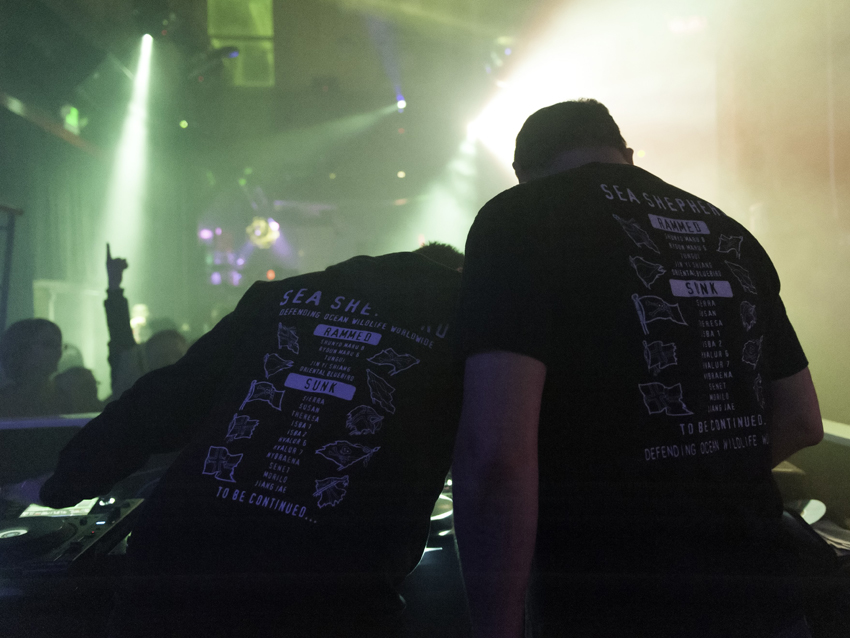
110 To The 101
“This was an attempt to slow down. It started at my house one night when the kids were asleep; my wife and I were doing our things, just hanging out. Things just happened and evolved, and the song became cinematic in scope. Sounds were labeled things like ‘Evil,’ ‘Hope,’ ‘Stress’ – I was trying to communicate the sounds to my own mind and make sense out of them.
“I love the fact that there’s all this stuff going on and it builds, and then it gets very pretty and it drops to this big sound. It’s very heroic and it brings things together. I just like the symbolism in it. I never thought I’d talk about music this way, but you know, some songs get you through. They lift you up and build you. This was an attempt to channel the angst and stress of everyday life in a way that could ultimately be uplifting.”
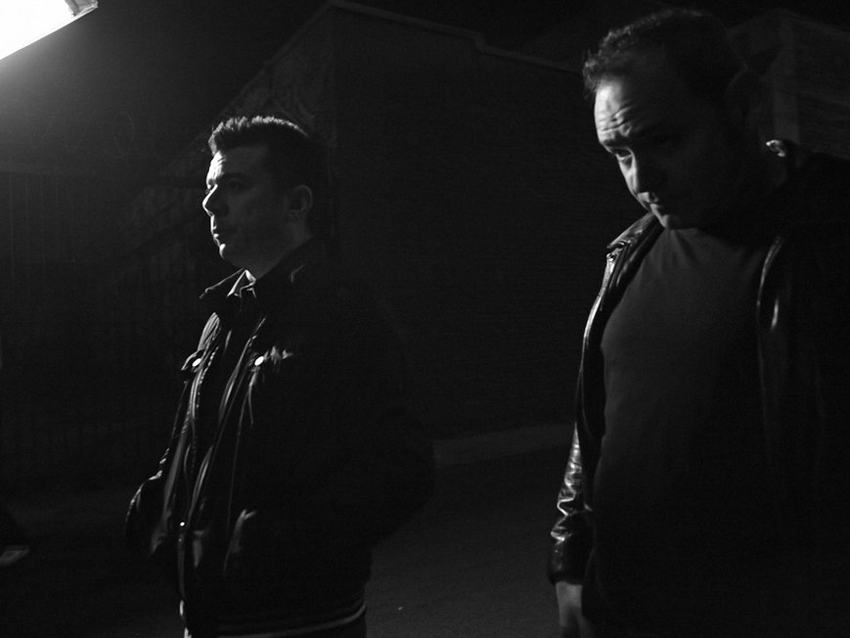
Jupiter Shift
“This is another track that was sitting around a bit that I was unhappy with for a while. One of the things that was interesting was when we had The Darth Invader do a mix early, early on. It was so fucking awesome! I was like, 'Wow, the original sucked in comparison.’
“There’s lots of Massive on it and a lot of synth layering on the drop. Another cool thing is the vocals – that’s me doing some of the ‘ahh-ahh-ahhhhs.’ I was hearing the melody, and so I just went in and recorded it to have some fun.
“My wife loves the stuff at the beginning, this ‘baow, baow, baow!’ part. She kept saying, ‘You’ve gotta make the whole song based on that – which we couldn’t really do. But then Ken’s wife really loved the ‘boommm, ba-ba-boom!’ thing at the end. A lot of dance music has starting points and finishing points that sound the same, because they’re making songs for DJs. We don’t want to do that; we want you to feel that you’ve been somewhere by the time you’ve listened to one of our songs. The song took a while to figure out. Some tunes give you a bit of a struggle.”
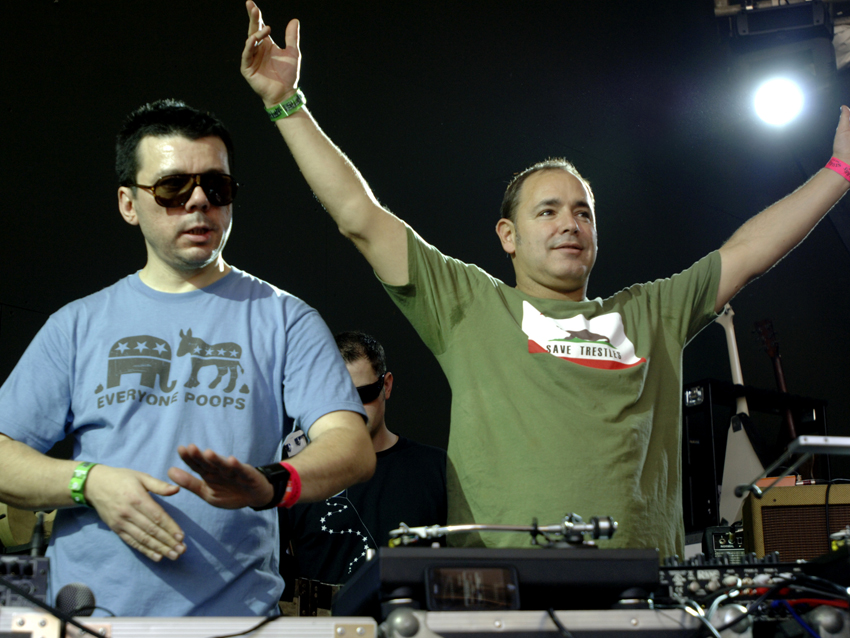
Dosimeter (featuring Nick Thayer)
"Our buddy Nick Thayer came to town and instigated the conversation about working. For Ken and me, it became a matter of ‘OK, what can we do that can contribute to what this whiz kid does?’ And that’s when we took a look at our old synthesizers.
“A friend of ours, Byron Wong, came to us a Mini Korg. On the front of it is this organ-like setup; there are filters that are sliders, not just knobs, and you can do some very interesting things with them. We hooked that up through our original Sherman FilterBank, and then we sent another signal to a fuzz pedal. Pretty cool.
"I worked the Mini Korg and Nick worked the Sherman. We did a long take where things got crazy and nasty. Nick did a lot of the hard work on this and took it to Australia. There’s a version of it that came out on his project, and we added stuff at the beginning and end. It’s such a cool track. This is us going, ‘Go on, you punk kids. Try to do this on your VSTs!’”

Grace (featuring LeAnn Rimes)
“We met LeAnn during he Re:Generation documentary that we were a part of. She was working with Pretty Lights on their thing. I love it when you get a chance to listen to somebody’s voice without all the musicality and instrumentation around it. She’s a great singer. We just fell in love with her voice when we heard it in the movie.
“We made a skeleton track that was much more organic, with a more laid-back beat and some electric piano. I put it on a USB stick, gave that to LeAnn and said, ‘Here, I believe in fate.’ She went away and came back with the track a few months later, and it was great.
“There’s some instrumentation on there from Massive. We rented a dope-ass Wurlitzer piano, and our friend Anthony played the shit out of it. I love the way it turned out. We were thinking of getting a Fender Rhoads, but we wound up with the Wurlitzer, and it was badass.”
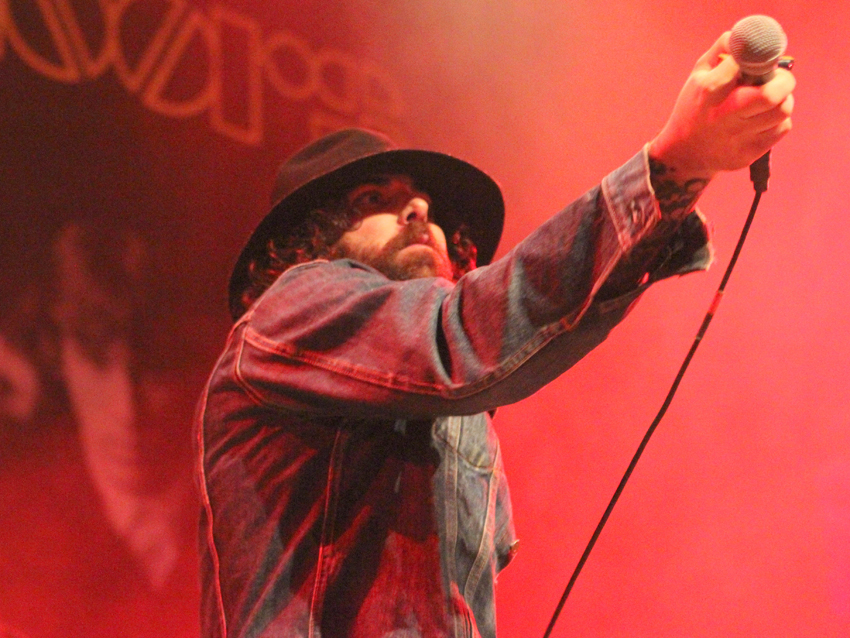
Difference (featuring Franky Perez)
“Franky Perez is amazing, man. We had this song sitting around – we knew it was close, so we put it aside for a while. My friend Jeff Caldwell was visiting, so we hooked up a Morley pedal and had him play guitar on the track. He had a drop D tuning going on, and he just killed it.
“We were loving it while we were recording, but when we went in to edit it the next day it sounded noisy as hell and sort of buggy. It just didn’t sound as beautiful and wonderful as it did when he was laying the guitar down. But I put it through the McDSP Futzbox, and that made it sound like it was a plastic toy guitar or something – it was strange and really cool.
“Franky came in and immediately vibed out with our sense of humor. He worked with the skeleton track and just nailed his vocal in one night. We were sitting there going, ‘Shit, this track is awesome!’”
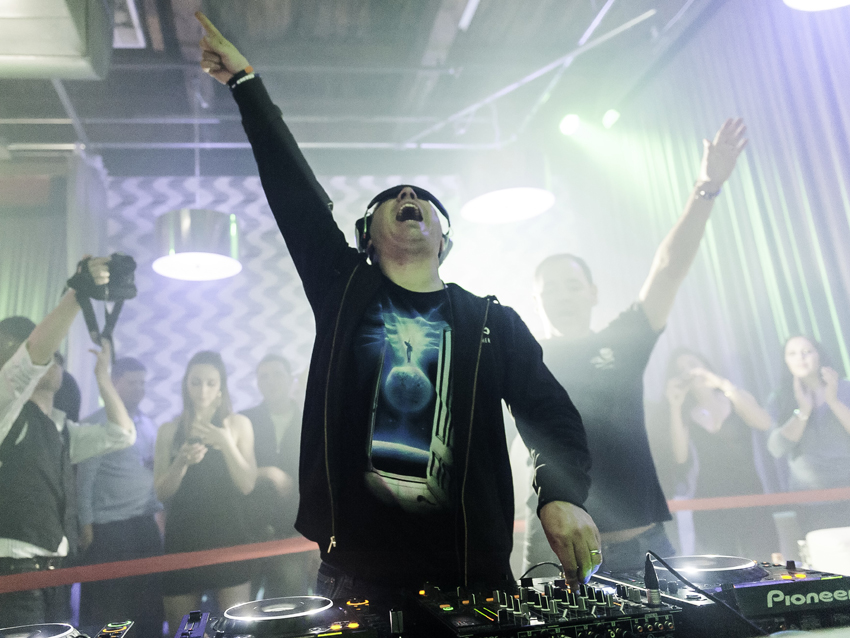
Metro
“I had gone to the X Games at the Staples Center with my son, my little brother and my wife. We were like, ‘Hey, let’s take the Metro down to the arena and be cool city people and not deal with parking.’ That was all fine and dandy until we left and got on the wrong train.
“Long story short, on a packed train going back to the station in North Hollywood, I kept hearing that voice coming out – ‘Next stop.’ I recorded it with my phone. It was a little noisy, so Stephanie, our assistant, went back one morning and made a better version of the recording. Not to violate anybody’s sample protection, we actually redid it ourselves.
“The whole concept behind the track was to capture that feeling we had, that stressful, lost emotion when you’re going in the wrong direction, and then that wonderful relief you feel when you’re finally on your way home after this long, long journey. You just kind of go, ‘Whoo!’”
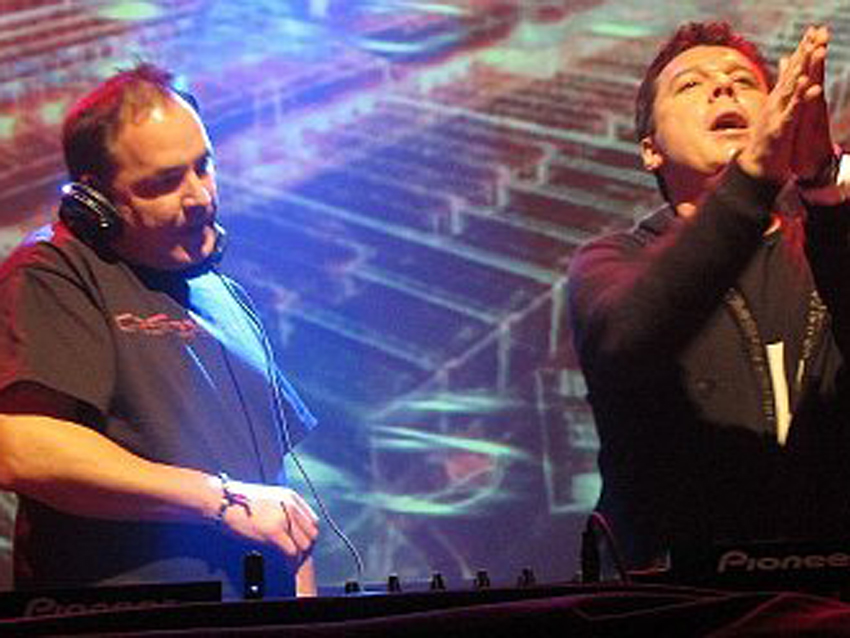
After Hours (featuring Afrobeta)
“We had been on tour with Afrobeta, Tony and Cuci, and as we got to know them more and more, we realized what truly incredible people they are. They got drunk doing karaoke one night and came over to the studio. I got kind of caught up in the silly spirit and handed them a mic.
“The stuff I recorded was cool, but the tempo just didn’t seem to fit, so I threw everything out from the previous version and created something as a nice landing spot for the rest of the album. I did get a lot of heat from Ken about that, but sometimes you gotta follow your instincts and see where the music takes you.”
Joe is a freelance journalist who has, over the past few decades, interviewed hundreds of guitarists for Guitar World, Guitar Player, MusicRadar and Classic Rock. He is also a former editor of Guitar World, contributing writer for Guitar Aficionado and VP of A&R for Island Records. He’s an enthusiastic guitarist, but he’s nowhere near the likes of the people he interviews. Surprisingly, his skills are more suited to the drums. If you need a drummer for your Beatles tribute band, look him up.
